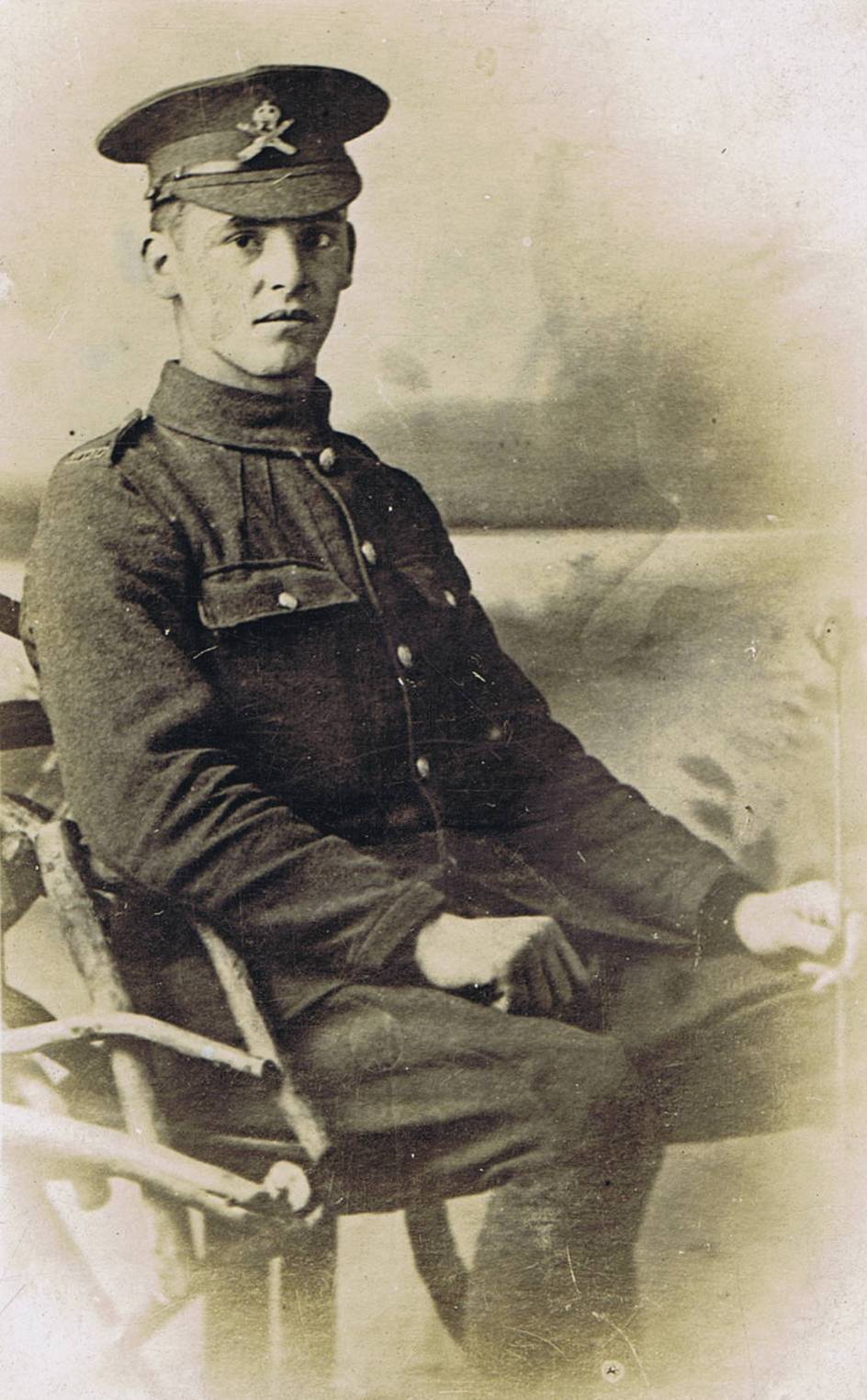
Submitted by Paul Elliott.
George was a Great Uncle, the younger brother of my paternal Grandmother. I had no knowledge of his existence until recently. He lived in Church Street, Rothwell, Leeds, was married in December 1914 to Jane Ann Ambler and worked as a miner.
He joined the Kings Own Yorkshire Light Infantry (regimental number 25522) in September 1915 at Pontefract. He was transferred to the Machine Gun Corps (35672) in December 1915 and went to France in May 1916 with the 40th Company. He is one of the people whose Full Service Record survives. It shows that he had two sons, Alan born in 1915, and George born in March 1917. He died of wounds in April 1918 having served in France and Belgium. He is not commemorated on the Rothwell War Memorial. He was buried at Outtersteene Communal Cemetery Extension, Bailleul.
His wife received a pension of 25 shillings and 3 pence a week and inherited £1- 6s with a gratuity of £11-10s. He appeared on the Yorkshire Evening Post Roll of Honour on 4th May 1918, described as a driver and having died of wounds.
Explore more memories from the ribbon
-
Captain Leonard Yorke MC
Born in Church Fenton, Yorkshire in 1889, Leonard Yorke’s life was to come to a tragic conclusion ten years after the First World War came to an end. In his early years, Leonard lived in Castleford, the son of a Station Master with the NER. He moved to London to become an Electrical Engineer and following the outbreak of war was gazetted as a 2nd Lieutenant in the 4th Battalion, Yorkshire Regiment. By May he was in Belgium where on 24th and 25th the 4th Battalion were involved in heavy fighting. 2nd Lt Yorke was pulled out of the line due to being a vicitm of the first gas attack of the war, not returning to front line duties until August 1915. In late 1916 he was promoted to Lieutenant and by June 1917 he had attained the rank of Captain. His Military Cross citation of 28th September 1918 states that he “displayed great courage in the leading of his platoon at a time of exceptional difficulty and danger…..He was seriously wounded during the action”. The Yorkshire Post of 11 October 1918 reported “Capt. Leonard James Yorke, Yorkshire Regiment, son of Mr James Yorke, 19 South End Avenue, Darlington, has been wounded and is in hospital abroad”. After two years in hospital, Yorke was invalided out of the army. Leonard Yorke returned to London after leaving the army, but couldn’t cope following the stresses of war. On May 2nd 1929, Yorke shot himself on Hampstead Heath. At the inquest his…
-
Wilfred Wood
Wilfred Wood, an employee of the North Eastern Railway before the outbreak of war, served with the 5th battalion of the Yorkshire Regiment. His commanding officer, 2nd Lt G H Smith wrote the following to his father: “Dear Mr Wood – It is with deep regret that I inform you of the death in action of your son, Pte. W. Wood. He was instantaneously killed on the morning of the 19th instant by a whizz-bang shell, which dropped into the trench he was in; he was buried behind the line on the 20th, and a good cross is being erected to his memory. Words cannot express how deeply I feel for you in your great loss. He was a good soldier, and always kept up bright spirits. The men of my platoon join me in the deepest sympathy for you” 240637 Private W Wood died on 19 July 1917 and is buried at Heninel Communal Cemetery Extension.
-
Henry Jesse Richardson
Paul Goad of Frenchgate told us about his Great-Uncle, Henry Jesse Richardson. Henry was born in March 1889 in Hailsham, East Sussex, where he lived prior to enlistment. In the 1911 census he gave his profession as Mat Making, his Father William, being a Mat Weaver at that time. Hailsham had a vibrant string, twine and rope based industry at the time from which they gained their employment. Henry enlisted in 1916 at Purfleet and joined the 13th London Regiment (Princess Louise’s Kensington Battalion). Henry’s Service medal and Award Rolls show that he served on the Western Front from September 1st 1916 until his death on August 16th 1917 at the Battle of Langemarck. During his time in theatre Henry’s Battalion were in action at the Battles of Ginchy, Flers-Courcelette and Morval in 1916 and the Second Battle of Arras in 1917. Henry’s burial spot is at Ypres, Arrondissement Ieper, West Flanders Belgium. He is also remembered on the roll of Hailsham War Memorial.
